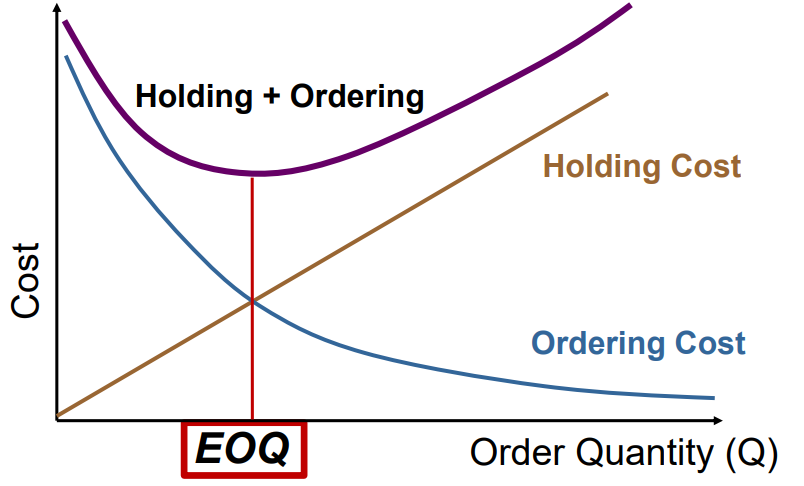Question
Comfort Inc. sells ergonomically designed office chairs. The company has the following information: Average demand = 20 chairs per day Average supplier lead time =
Comfort Inc. sells ergonomically designed office chairs. The company has the following information:
Average demand = 20 chairs per day
Average supplier lead time = 3 days
Item unit cost = $50/chair
Ordering cost = $25/order
Annual inventory holding cost = 25% of inventory value
The business year is 250 days
a. How many chairs should the firm order each time? Assume there is no uncertainty at all about the demand or the lead time.
b. What will be the total annual cycle-inventory cost and its breakdown of costs?
c. What will be the firms average cycle inventory?
d. What will be the annual inventory turnover rate (using unit sales and unit inventory)?
e. Explain the relationship (tradeoff) between inventory holding costs and ordering costs in the economic order quantity. How does EOQ change with changes in the variables in the formula i.e. demand, ordering cost, inventory holding cost?
Important formulas and graphs:
Total annual cycle-inventory cost, C = holding costs + ordering costs
Holding costs = average cycle inventory x unit holding cost
Annual unit holding cost = unit cost x annual holding cost rate
Ordering costs = # of orders per year x ordering cost per order


 C=2Q(H)+QD(S)Q=orderquantity(lotsize)annualdemandH=annualunitholdingcostS=orderingcostperorder D=AnnualDemandS=OrderingcostH=AnnualunitholdingcostEOQ=H2DS
C=2Q(H)+QD(S)Q=orderquantity(lotsize)annualdemandH=annualunitholdingcostS=orderingcostperorder D=AnnualDemandS=OrderingcostH=AnnualunitholdingcostEOQ=H2DS Step by Step Solution
There are 3 Steps involved in it
Step: 1

Get Instant Access to Expert-Tailored Solutions
See step-by-step solutions with expert insights and AI powered tools for academic success
Step: 2

Step: 3

Ace Your Homework with AI
Get the answers you need in no time with our AI-driven, step-by-step assistance
Get Started


